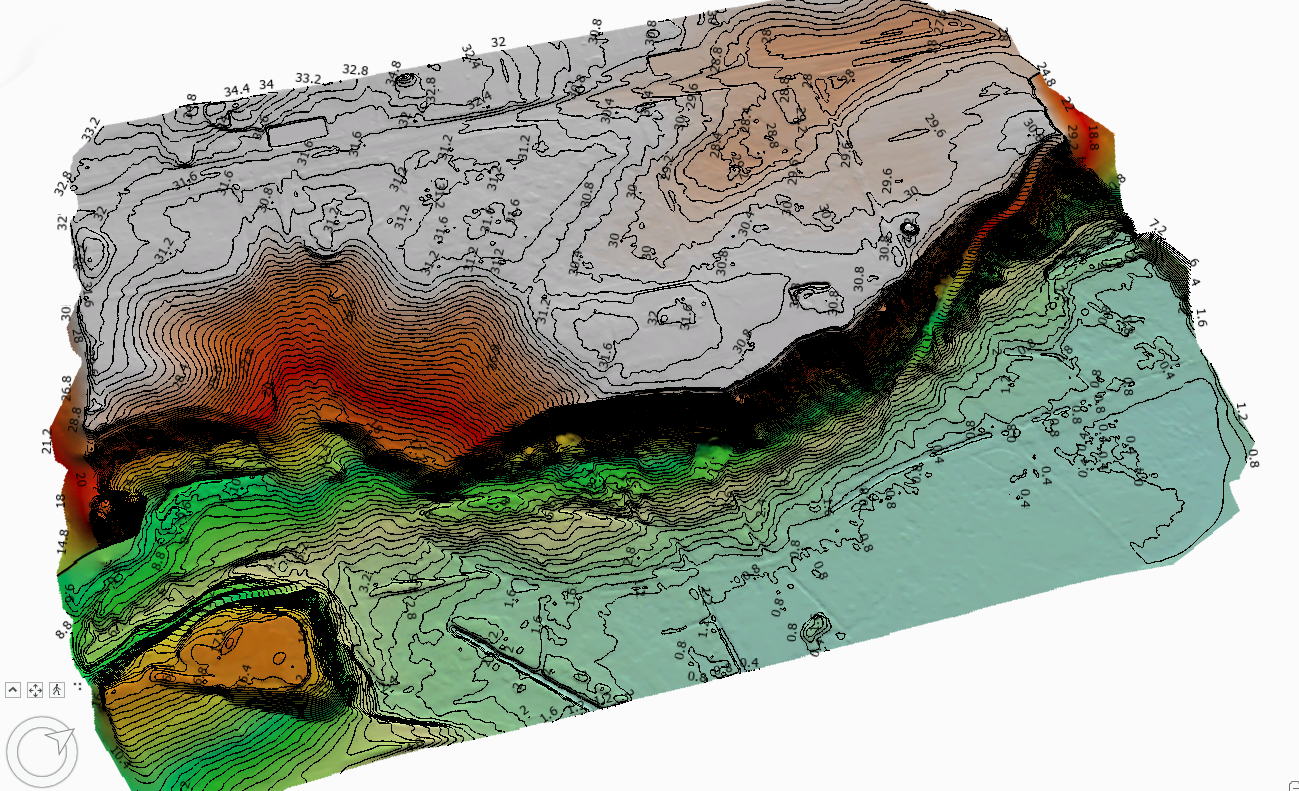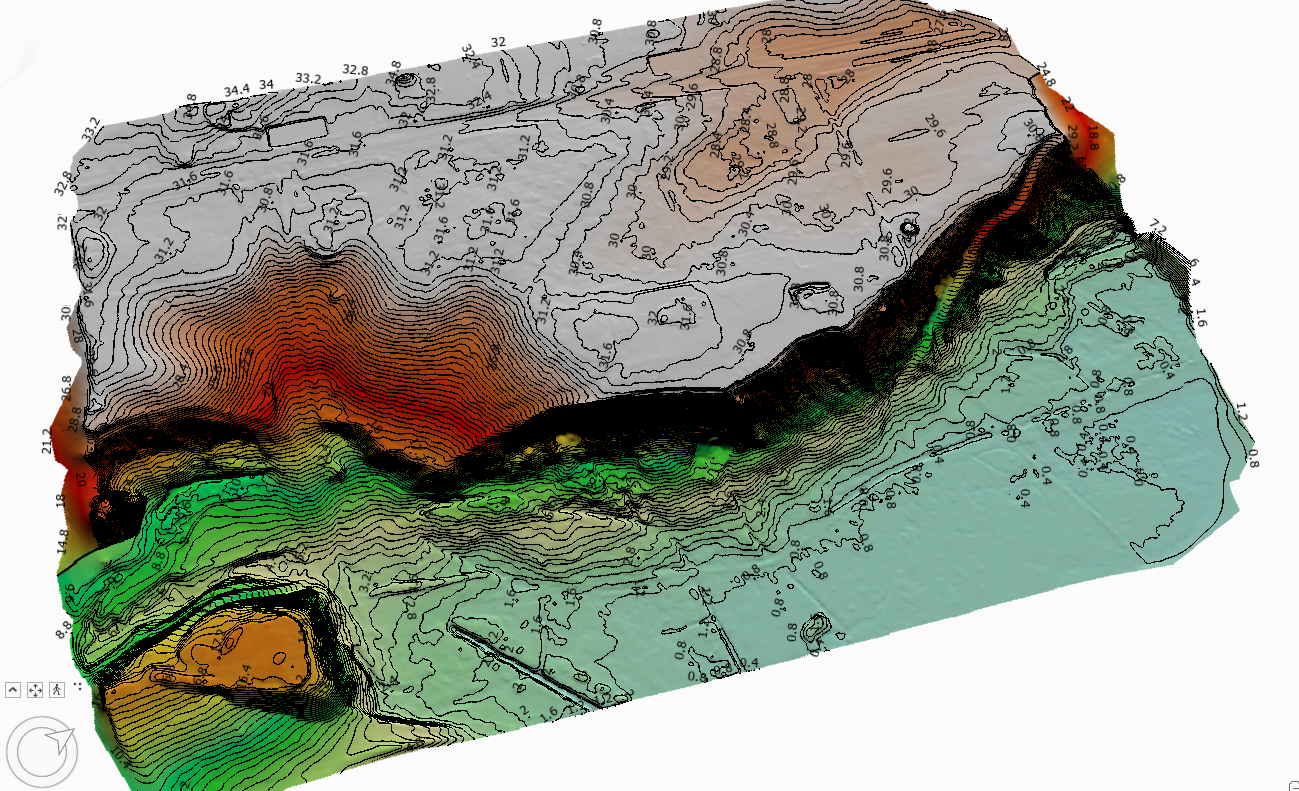GPSIT’s LiDAR surveying services reveal the true shape and flow of your land—with a level of precision that’s impossible to see from the ground.
Seeing Orchards Differently: The LiDAR Advantage
Why Drainage, Terrain, and Frost Protection Matter More Than You Think
-
Pinpoint Water Flow and Drainage Issues
Even subtle elevation changes can affect how water moves through your orchard. LiDAR identifies low spots, pooling areas, and runoff paths—helping you prevent waterlogging, root stress, and disease pressure. -
Understand Cold Air Movement for Frost Protection
Cold air behaves like water—it flows downhill and settles in low-lying areas. LiDAR helps you visualize these frost-prone zones so you can position fans, sprinklers, and sensors more effectively, protecting your crop when it matters most. -
Accurately Calculate Fill Requirements
When low spots are identified, LiDAR data allows you to precisely calculate the volume of fill needed to level the terrain. This helps you budget accurately, avoid over- or under-filling, and ensure long-term stability. -
Improve Access and Safety
Understand slope gradients and terrain variability to plan safer access routes for machinery, staff, and contractors—especially during wet conditions.

What Is a DEM and DSM—and Why Does It Matter?
LiDAR data is used to generate two powerful models:
-
Digital Elevation Model (DEM)
A DEM represents the bare earth surface, with all vegetation and structures removed. It’s ideal for analyzing terrain, drainage, and frost risk—giving you a true picture of how water and cold air will move across your orchard. -
Digital Surface Model (DSM)
A DSM includes everything on the surface—trees, vines, trellises, buildings. It’s useful for understanding canopy height, infrastructure layout, and how elevation changes interact with orchard structures.
Together, these models give you a complete understanding of your orchard, both above and below the canopy.
.png?width=300&height=593&name=Phone%20Mockup%20(1).png)
What Is a Contour Map—and Why Is Accuracy Important?
A contour map is a visual representation of elevation across your orchard, using lines to connect points of equal height. These lines help you see the shape of the land—its slopes, ridges, valleys, and flat areas.
With LiDAR, GPSIT can produce contour maps with vertical accuracy typically within ±2 cm, allowing you to:
- Visualize terrain in fine detail
- Identify micro-topography that affects drainage and frost
- Plan earthworks and fill with confidence
- Make informed decisions based on real, measurable elevation data
Accurate contour maps are essential for understanding how your land behaves—and for making smart, data-driven improvements.

FAQ'S
-
What is LiDAR and how does it work in orchards?
LiDAR (Light Detection and Ranging) uses laser pulses to measure distances and create high-resolution 3D maps of orchard structures, including tree height, canopy volume, row spacing, and terrain elevation.
-
What kind of insights can LiDAR provide for orchard management?
LiDAR can reveal:
- Tree size and canopy density
- Gaps in planting or irregular growth
- Terrain slope and elevation
- Drainage patterns
- Potential yield zones based on canopy volume
-
How accurate is LiDAR data compared to manual measurements?
LiDAR is highly accurate and consistent, often detecting subtle variations that manual scouting can miss. It provides centimeter-level precision depending on the equipment and processing.
-
Can LiDAR help improve orchard productivity?
Yes. By identifying underperforming areas, optimizing irrigation and fertilization, and guiding pruning or replanting decisions, LiDAR supports data-driven productivity improvements.
-
What are the costs and ROI of using LiDAR in orchards?
Costs vary based on survey method and orchard size. However, the ROI can be significant through improved decision-making, reduced input waste, and enhanced yield forecasting.
-
Can this data be viewed in a Dynamic Map?
Yes. We can pull all the data into the Landkind Dynamic Map to make navigation simple on orchard.
-
Can we add the LiDAR flight onto our Zespri audit
Yes. There are costs associated with with this work and they will be billed to the orchard and not be passed on to Zespri.
-
What do I get as an end product?
When we conduct a LIDAR survey, you’ll receive:
- Contour lines generated from the Digital Elevation Model (DEM), with intervals tailored to the specific site. These contours help visualize elevation changes and terrain structure.
- DEM access via the Landkind app, which is the most practical way to interact with elevation data—especially for larger orchards. While we can also provide the DEM as a PDF, it’s less convenient for detailed or large-scale analysis.
- Optional 3D models of your site, which offer immersive terrain visualization. These require additional processing and will be charged accordingly.